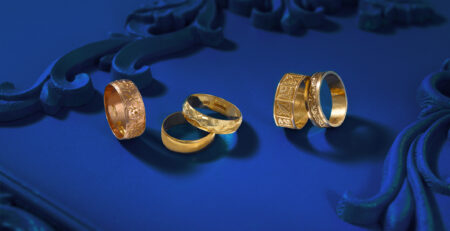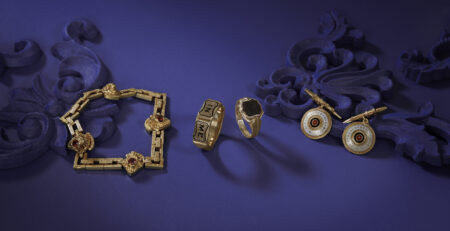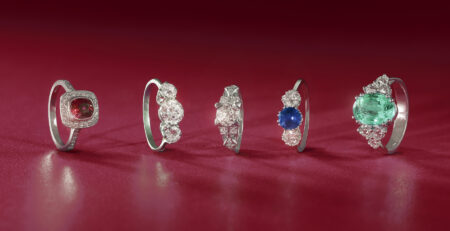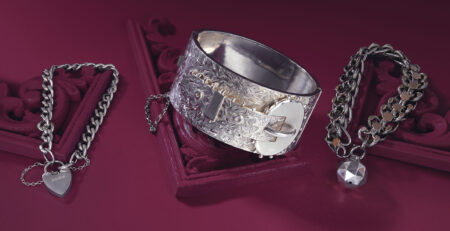How can you recognise real diamonds?
Nothing can replace the trained eye of a jeweller and yet there are ways and means for even a layman to find an answer to the question: “How do I recognise a real diamond? “. With the following tips, you can take a closer look at diamonds.
Diamonds: Authenticity or forgery?
It is not without reason that an imitation diamond is deceptively real. Distinguishing a real diamond from a fake is therefore a challenging task.
A layman does not have the same examination methods at his disposal as a jewellery expert. Nevertheless, there are a few tricks that can be used to distinguish a small investment in the form of a real diamond from a deceptively genuine diamond imitation. We will take a closer look at these tips in the following.
Difference between zirconia, moissanite, brilliant or diamond
To get to grips with this question, it is important to know what a real diamond is made of before moving on to distinguish between cubic zirconia, moissanite, brilliant or diamond. To distinguish the value of a diamond from other gemstones, a globally recognised grading scheme has been established. To determine the value of a genuine diamond, attention is paid to four graduations, the so-called 4 Cs
- Carat (weight)
- Colour (Colour)
- Clarity (purity)
- Cut
In the case of a brilliant-cut diamond, the way in which the diamond is set into the piece of jewellery is also taken into account. Consequently, there are additional costs such as forging and setting the diamond.
What counterfeits are there for diamonds?
Zirconia is particularly often used for jewellery such as rings or earrings as an imitation of diamonds. The use of natural zirconia is a rarity, rather it is artificial zirconia, more precisely cubically stabilised zirconium oxide (KSZ). Zirconia has a hardness of 8 to 8.5 on the Mohs scale and is indispensable as a low-cost stone in the jewellery industry. Compared to a diamond of the same size, a one-carat zirconia costs one thousandth less!
Even for jewellery experts, it is difficult to unmask good zirconia stones right away. This is usually only possible by measuring the thermal conductivity value: diamonds have a particularly heat-conducting property, while zirconia conducts heat particularly poorly. Other methods of measuring the difference between zirconia and diamonds include light refraction and the determination of density. Incidentally, natural zirconia looks glassy compared to artificial zirconia. They differ greatly in their brilliance, light refraction, density as well as the hardness of the material. Special equipment is needed to determine the exact measurements.
Moissanite – only diamonds are harder
Moissanite is one of the hardest naturally occurring substances. Only real diamonds can rival it in terms of “degree of hardness”. Moissanite is also often used instead of a real diamond and artificially produced in the laboratory. The artificial production of silicon carbide (which both meteorites and moissanites contain) succeeded for the first time in gemstone quality at the end of the 1990s and was named after Moissan, who examined meteorites at the beginning of the 19th century and came across silicon carbide.
Antique diamond jewellery as a fair & sustainable alternative to synthetic diamonds
One thing we are sure of: nothing beats an engagement ring with a real diamond! Natural, genuine diamonds are becoming increasingly rare. This makes it all the more important to prove authenticity with a diamond certificate, not least to rule out blood diamonds or conflict diamonds. Fortunately there are antique jewellery and vintage jewellery so that no other raw materials have to be extracted and traded under questionable conditions. We offer a wide selection of antique, fair and thus sustainable diamond jewellery.
How do you recognise diamonds?
Besides the many imitation diamonds, there are also brilliant-cut diamonds. But a brilliant is truly a diamond. The difference is that a diamond means the gemstone in its “raw state”, whereas a brilliant already has a specially cut diamond shape. The unique cut with 58 facets gives the diamond its inimitable brilliance! A brilliant is a round cut diamond and thus refers to a special and probably the most popular cut for diamonds in jewellery. It is one of the most popular ring cuts and is therefore also increasingly used for engagement rings. There are also other cuts such as the marquise cut, which makes the diamond look larger, or the radiant cut with 70 facets or even the princess cut consisting of 76 facets. Which cut it should be in the end is decided by taste. If you want to be 100 % sure that your diamond is real or if you cannot decide on a cut, it helps in any case to make an appointment with for prossional jewellery advice at Antique Jewellery Berlin.
Real diamonds in the “endurance test”
A diamond does not only score highest on the popularity scale of 1 to 10 when choosing an engagement ring! Basically, it is a gemstone that consists of pure carbon. There are various methods to test minerals for hardness. As far as its degree of hardness is concerned, no other mineral comes close to the real diamond, because even a corundum, with a degree of hardness of 9, has a grinding hardness 140 times lower. The scale used to determine the degree of hardness is called the “Mohs scale”. The Mohs scale, named after the mineralogist Friedrich Mohs (* 1773 – † 1839), is based on the realisation that harder substances can cut or score softer substances. The scoring hardness of the scale ranges from the softest mineral, talc, with a hardness of 1, to the hardest mineral, diamond, with a hardness of 10. Diamond is thus a true “hardness case”. There are other scales such as Rosiwal’s, which refers to grinding hardness, or Vickers, which refers to indentation depth. If it is not defined in more detail, Moh’s hardness is meant for gemstones.
Mohs scale of hardness: Carving hardness of real diamonds
Mineral |
Hardness level |
| Talk |
1 |
| Plaster |
2 |
| Calcite |
3 |
| Fluorite |
4 |
| Apatite |
5 |
|
Orthoclase |
6 |
|
Quartz |
7 |
|
Topaz |
8 |
|
Corundum |
9 |
|
Diamond |
10 |
Expert vs. layman: recognising real diamonds
There are different test procedures to ensure whether it is a real or artificial diamond. The condition of the diamond is also important. Is it a loose diamond stone or is it set in jewellery? When examining the authenticity of a diamond, it makes a big difference whether it is a diamond set in jewellery or a loose stone, due to the factors mentioned, such as weight. The following tips will help you to recognise a genuine diamond even as a layman:
Vision test: Reading the newspaper with diamonds
To get an impression of authenticity, there are two possible readings. In the case of a diamond set in jewellery, the light should be so strongly refracted by the many facets that it is impossible to “see through” to the setting. In turn, a loose diamond should make it impossible to decipher the written word on a newspaper when placed “face down” on it. In other words: Take a close look at the diamond, with the aim of eventually seeing nothing – neither the setting nor the text. If you succeed, it is a good sign that the diamond is genuine. Unfortunately, it is usually not quite that easy. There are many other test methods to get certainty. As an aid to magnification, there are so-called precision loupes, which, with a 10-fold magnification, form the assessment basis for diamond grading. Some even have UV lights for optimal lighting conditions.
Breath test: Diamonds – a touch of luxury
When you breathe on the cleaned diamond, it should not fog up, as it distributes the heat directly on the stone, because it has a particularly heat-conducting property, as described above. However, the test is only really meaningful if the gemstone is free of dirt or grease stains without exception.
Anti-scratch test: treating the stone with emery paper
Sounds questionable, but it is quite legitimate. Due to their extreme hardness, diamonds have a resistance that is unparalleled. It is possible to put a diamond through its paces, or in this case its authenticity, with emery paper, but who wants to do that? In any case, any damage points to a fake.
Fire-water test: Diamonds on a dive
If you drop a loose diamond into the water, it will immediately sink to the bottom due to its weight and density. An imitation diamond, on the other hand, will only sink slowly. A loose stone can also be heated by heat, for example by a lighter flame. Immerse the stone in water after about 30 seconds. A real diamond should survive this without any problems, whereas a fake will probably break due to its physical properties.
We strongly recommend that you have the authenticity of your diamond jewellery proven and visit a certified jeweller. This way you will not only have absolute certainty, but also the security that your dearly loved jewellery will remain intact. A jewellery expert has other testing options available. Do you have any questions? We at Antique Jewellery Berlin are here for you.













